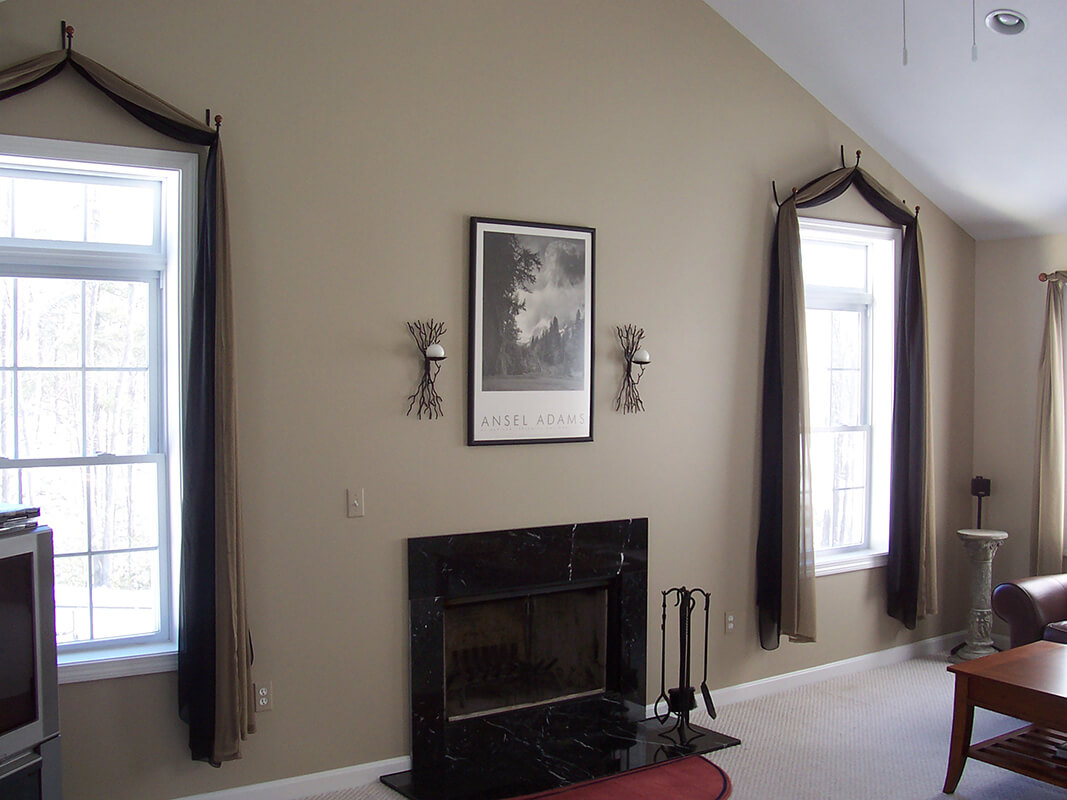Services We Provide
We do not do lead paint work. New regulations require anyone disturbing lead paint to be certified.
We have opted to not work on lead painted surfaces. Click here for more information.
INTERIOR PAINTING
Preparation is the key.
Many newer homes and offices have had the bare minimum of paint work done. There is no primer, little sanding, and all on top of sub-standard drywall. This makes a very poor surface and near impossible to make look good.
Lets start with primers.
You’ve no doubt heard of “all in one” paint and primers. Upon closer examination, you will see that this is just hype to sell you their brand of paint. There are many different types of primers, sealers, bonding agents, stain blockers, and color enhancing.
For new construction you have several issues. First: is the drywall dust free? If not, nothing will stick very well. Second: drywall is very porous. You need a sealer-type primer, hopefully with a lot of pigment for coverage. Sealers will require anywhere from 4 hours to over 24 hours before top coating. How is that possible with an all in one?


EXTERIOR PAINTING
Paint vs. Stain
Solid latex stain and latex paint is virtually identical. The main difference is that stain leaves a thinner film so moisture that is trapped behind can escape better.
The flip side is that moisture can also go the other way. Think of it as water proof vs water repellent.
If you are having peeling issues caused by moisture pushing the paint off, or if you have a lot of layers of paint or stain on your home then stain may be right for you.
For longevity, paint is the better choice. A new home can expect to get 8-10 years or better with a full oil based primer stain followed by 2 top coats. That same home can get about 10-15 years with paint. Note that these are under ideal conditions.
For existing homes, it all depends on what has been done in the past. Was it primed when new?
CABINET REFINISHING
Bringing Your Kicthen Back to Life.
Often your existing cabinets are well built but either out of date or the original finish is worn. If you’ve priced new cabinets you know how expensive that can be. Re-facing is another option, but almost 2/3 the cost of new.
At Sloan Painting, we offer several options for refinishing your existing cabinets, usually for half the cost of new. We can refinish the existing clear coats by applying an antique rubbed oil finish, off white antiquing, or enamel paint. We can also add soft close hardware, new handles, hinges, etc.
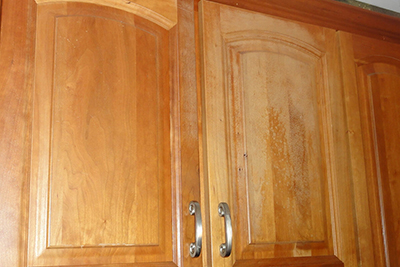
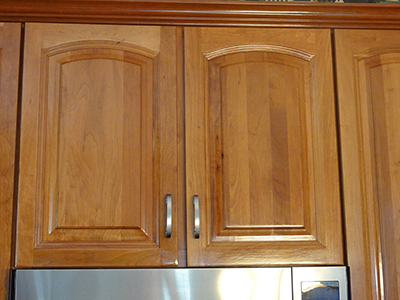
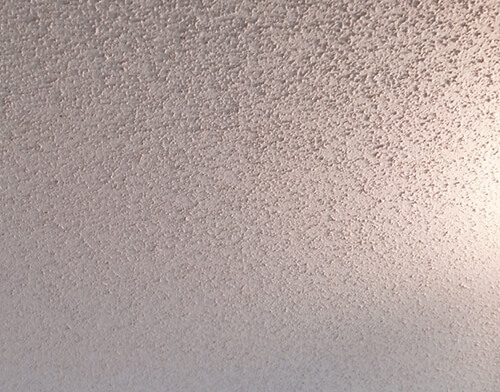
POPCORN CEILING REMOVAL
Popular for many decades, either you hate it or you hate it.
If its done properly (over a primed clean ceiling) it is easily painted and pretty durable. Unfortunately, popcorn ceilings are mostly applied over bare sheet rock with minimal patching and taping. Mixing it too dry and not cleaning the sanding dust off the ceilings all contribute to the dreaded peeling of the popcorn.
When this happens you really only have 2 courses of action: Strip it off, patch it, prime the ceiling, and paint or
Re-texture. Either way, peeling popcorn texture cannot be permanently “repaired” because every time it gets wet it will continue to peel.
At Sloan Painting, we have stripped hundreds of textured popcorn ceilings. We can give you smooth ceilings or re textured to have continuity with the rest of their home. We are equipped to get it down and your home back in order as soon as it possibly can.
MILDEW & ALGAE REMOVAL
Professional Care for a Long-Lasting Look.
If your vinyl siding is turning green or black, this is algae and mildew. At Sloan Painting, we offer mildew and algae removal using safe, biodegradable chemicals and diluted household bleach. Algae also requires manually scrubbing. Many homeowners will wash a vinyl house every year or two to help keep it looking new. Or if you are planning to paint it yourself we can clean it so you will end up with the best possible result. Painting over mildew and algae will guarantee the paint will fail, that’s why professional painters always wash a house before they paint.
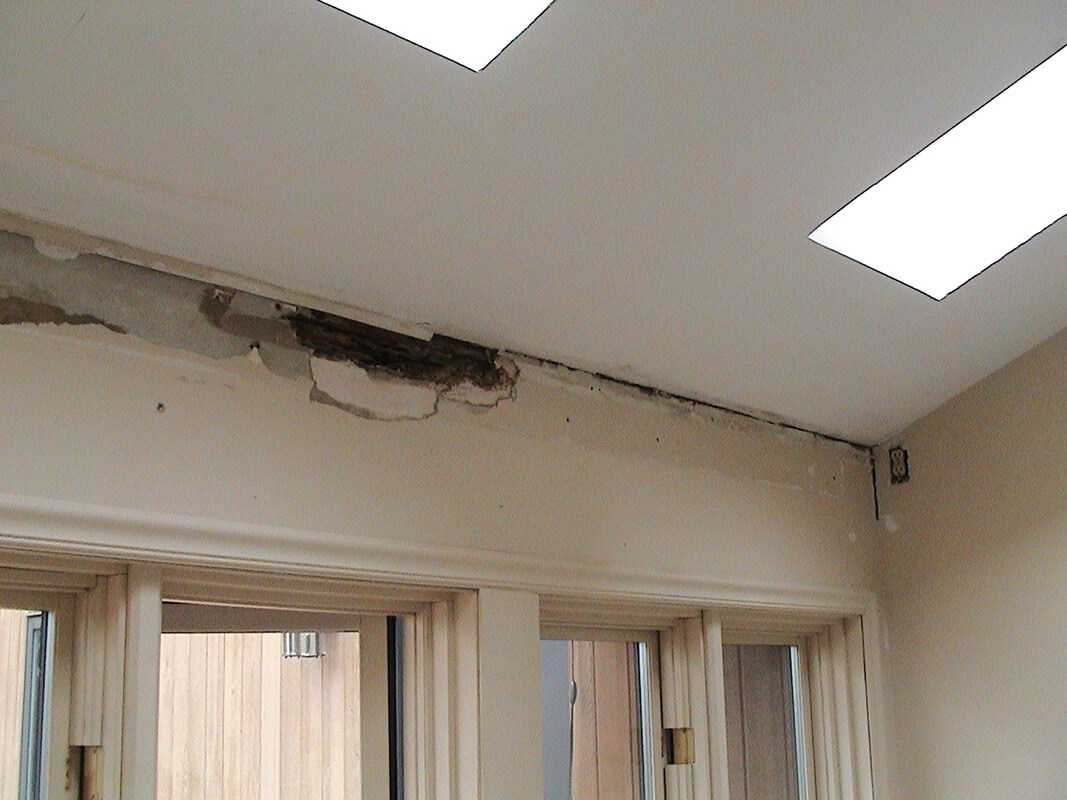

POWER WASHING
There are many misconceptions regarding power washing–almost as many as there are types of washers. For wooden and vinyl siding, you do not need super high pressure washers. In fact, too much pressure and improper technique can do more harm than good.
What we recommend is to use the washer to apply the cleaning chemicals, allow them to work and then to rinse off. Some types of algae will require more pressure and scrubbing than just simple cleaning. You do not want to try to remove any loose or flaking paint with high pressure water. Not only will this inject water into and under the wood or siding, but it will also damage and rough up the surface.
There are many different types of house wash cleaners available. You must be careful when combining chemicals and some are not compatible with bleach (the mildew killer and remover). Some are also caustic and will cause etching and pitting of metal and glass. Some can also harm your plantings and lawn.
At Sloan Painting, we use a natural cleaner that is biodegradable and a common household bleach. The bleach is diluted with water and further diluted by the chemical injector on the power washer. We have never had any plantings or lawn damage with this system.
Black Streaks on Gutters
These are from the roof. While they will not come off with power washing, they can be removed with specialty cleaners and manually scrubbing. However they will come back.
Roof Cleaning
Do not use a power washer on your roof, as it will damage it. There are special chemicals that can be applied and rinsed off. For long term relief, zinc strips can be applied near the top. They will leach zinc onto the roof, keeping it clean.
AIRLESS & HVLP SPRAY PAINTING
Common Misconceptions about spray painting a house.
When you think about properly painting a surface, you think smooth even coats and good adhesion to whatever you are painting. When you use a brush, you achieve good adhesion by working the paint into the irregularities of the surface and also to overcome the surface tension that exists between the dry surface and the wet paint.
The problem with brushing is that unless you are a very skilled and meticulous painter, you will not be able to achieve an even surface coating. Some areas will be too thick and others will be too thin. This is why I believe you will achieve far superior results if you spray and back brush the first coat, and spray any subsequent coats.
With spray painting, you get the adhesion of the brush and the evenness of the sprayer. The subsequent coats do not have to be back brushed because the first coat has not fully cured and they will chemically bond to each other. Another advantage to spraying is there are usually some tiny gaps and cracks that only the sprayer can get to.

MISCELLANEOUS SERVICES
In additional to these services, we also provide:- Wallcovering and Border Installation and Removal
- Polomix & Zolotone Application
- Light Carpentry and Drywall Repairs
- Stenciling
- Paint Problem Consultations
